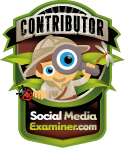
It’s not necessary to understand how the social networks function to derive utility from them. However, that knowledge will not only give your business more clarity for making better decisions, it will help it identify and adapt to emerging trends long before the competition.
The magic that enables the various digital networks to do what they do well is known as digital graphing or mapping. Digital graphs are the foundation of each and every digital network, with specific strengths the result of their respective structures.
Facebook is a social platform, Amazon commerce, Google content, and so on. However, according to a recent study, as a result of their commitment to connecting the world’s professionals to make them more productive and successful, LinkedIn is poised to become the first global economic platform.
Note: If you want to learn more about digital graphs, I covered this extensively in the first chapter of Built-In Social. You can download it here.
A Digital, Social, and Global Economic Network
For users, LinkedIn started as an online resume. These days it has become a platform that is driven by recruitment, business development, and content.

You may be surprised to learn that entrepreneurs and small businesses are the leading users of LinkedIn. This is one reason LinkedIn has made a steady stream of acquisitions and improvements to help us showcase our talents as individuals and businesses, with those digital graphs then connecting us to new connections, information, and opportunities.
LinkedIn digital graphs seek to build alignment between like-minded professionals by anticipating what we want to know, who we wish to connect with, and more. So, the more the network knows about you and your business, the better it can help you achieve your goals.

For example, Slideshare is a LinkedIn feature that gives you the capability to use PowerPoint® presentations to visually tell your story, while also embedding audio and video. LinkedIn Publisher accomplishes the same by showcasing your best articles, while also linking to additional content anywhere else on the web.
Your website is most likely where you promote your business capabilities – as you should. However, LinkedIn is a robust platform that can help you get it noticed fast.
Most businesses are hardly using LinkedIn at all. Nevertheless, as powerful as LinkedIn is now, we are still in the early stages of what it can become. My suggestion is to get serious about the one network that is committed to helping businesses succeed.
The Global CRM Potential of LinkedIn
For some time now, LinkedIn has shown promise for becoming a powerful CRM. While you would not want to rely on it exclusively (because you do not own it), a small business would be crazy not to take advantage of its capabilities.
For example, LinkedIn Contacts give us the capability to integrate Gmail, Yahoo Mail, Google contacts, and more with our accounts. As a result, whenever I send an email using Gmail a note is automatically attached to that person’s LinkedIn profile, thereby reminding me of our last communication.
Additionally, if that person is not yet a connection, LinkedIn will notify you and suggest you connect with them. Thus, LinkedIn helps you keep your business network updated, and in real-time. Periodically downloading your LinkedIn connections to your own CRM naturally ensures those connections are available within your proprietary marketing system.
Presently at 225 million profiles and 2.1 million groups, and with 2 new users joining every second, LinkedIn is the platform of choice for cultivating your online professional network. LinkedIn may not be as sexy as Facebook or Twitter, but it’s economic power for businesses is undeniable.
A quick favor for me?
If you like this blog, will you help me promote it? Just one click on this ready-made tweet is all it takes. Thanks.
About the author: Jeff Korhan, MBA, is the author of Built-In Social: Essential Social Marketing Practices for Every Small Business – (Wiley)
He helps mainstream businesses adapt their traditional growth practices to a digital world. Connect with Jeff on LinkedIn, Twitter, Facebook, and Google+.





